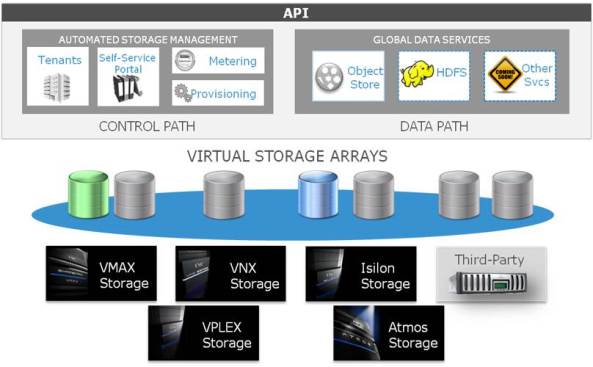LAS VEGAS – EMC Corp. has unveiled its new software defined storage product which is aimed at helping enterprise businesses cope with the escalating cost and complexity of that comes with managing big data demands.
The company’s ViPR software-defined storage (SDS) platform enables organizations to manage both storage infrastructure and the data residing in it, Jeremy Burton, executive VP for product operations, said Monday at the company’s annual EMC World conference here.

“Today we are seeing large corporations like AT&T provisioning for data that comes to as much as four petabytes,” he said today at the EMC World 2013 conference in here. “That amount of data is just too large and heavy to move, what you need is an architecture that will allow you to analyze and use that data without having to move it.”
Amitabh Srivastava, president of the advanced software division at EMC, described ViPR as a “lightweight software platform” purposely built for the cloud to abstract existing storage arrays into a single pool of virtual storage.
“ViPR’s software adapters connect to the underlying arrays, similar to how PCs and Macs use universal device drivers to connect to peripherals,” according to Srivastava, “This approach creates an extensible plug-and-play storage environment than can automatically discover and map to different arrays and understand their unique attributes.”
It its first release, ViPR supports EMC VMax, VNX, VPlex, RecoverPoint, Isilon and Atmos storage as well as third-party NetApp storage.
He said ViPR helps administrators in three ways:
· It manages both storage infrastructure (the control panel) and the data stored within that infrastructure (the data plane)
· It decouples the control panel from the data plane and allows the use of both together, or enable customers to use only the control plane to manage the storage arrays through policy based automation
· It provides the ability to view objects as files and provide file access performance without the latency found in object storage
· It can be implemented entirely in software and will run with EMC or non-EMC commodity hardware
Srivastava said the ViPR Controller can improve automation because it virtualizes the underlying storage infrastructure.
“Common storage management functions, like provisioning or migration, are abstracted so that different storage arrays can be managed as a single pooled resource in exactly the same way,” he said. “It is analogous to a universal remote control to operate your TV, DVD, streaming device and DVR. There’s no need to interact with multiple management interfaces.”